-
Everyone says that Bitcoin mining is profitable Is Bitcoin mini
-
Date:2024-08-15 19:07:56 Channel:Exchange Read:
Bitcoin Mining: An In-depth Analysis of the Truth and Profits
In today's era of digital currency, Bitcoin mining has become the focus of many investors and technology enthusiasts. People often ask: "Is Bitcoin mining profitable?" The answer to this question is not a simple "yes" or "no", but requires in-depth analysis from multiple angles. The profitability of mining is affected by many factors, including market price, mining difficulty, equipment cost, and electricity costs. Therefore, this article will delve into the economics of Bitcoin mining and reveal the truth.
First of all, the basic principle of Bitcoin mining is to solve complex mathematical problems through computers to verify and record Bitcoin transactions. This process requires not only powerful computing power, but also a lot of electricity support. Therefore, the cost of mining mainly comes from hardware investment and power consumption. Taking the popular ASIC mining machines on the current market as an example, the price usually ranges from several thousand to tens of thousands of yuan, and the power consumption of these devices often exceeds several hundred watts per hour. Taking China's electricity price as an example, the price per kilowatt-hour is about 0.5 yuan, which means that if a mining machine runs 24 hours a day, its electricity cost may reach tens of yuan.
After taking these costs into account, the profitability of mining becomes complicated. The price of Bitcoin fluctuates greatly. In 2017, the price of Bitcoin once exceeded $20,000, and then fell back to around $3,000 at the end of 2020. Such fluctuations not only affect investor confidence, but also directly affect the profitability of mining. For example, when the price of Bitcoin is high, the profit of mining is naturally lucrative; when the price falls, many small miners may face the risk of losses.
Next, we need to pay attention to the issue of mining difficulty. The Bitcoin network adjusts the mining difficulty according to the changes in the computing power of the entire network to ensure that a block is generated every ten minutes. This means that as more and more miners join the network, the difficulty of mining will gradually increase, resulting in a decrease in the chance of each miner to obtain Bitcoin. For example, in 2021, as the price of Bitcoin rose, more and more miners joined, causing the difficulty of mining to rise sharply, and many small miners had to withdraw from the market.
In addition, geographical location also has an important impact on the profitability of mining. The difference in electricity prices in different regions makes mining in some places more competitive. For example, in northwest China, abundant hydropower resources make electricity prices relatively low, attracting a large number of miners to set up mines. In some countries or regions with higher electricity prices, the cost of mining seems too heavy, so many miners choose to give up. It can be seen that choosing the right mining location is one of the important strategies to improve profitability.
After analyzing the costs and benefits of mining, we also need to consider the market prospects of Bitcoin. In recent years, more and more institutional investors have begun to pay attention to Bitcoin, believing that it is a kind of digital gold that can hedge against inflation and market volatility. This trend has led to a continuous increase in demand for Bitcoin, driving up its price. However, the market's heat has also brought more uncertainty, and many investors are facing the risk of price collapse while chasing profits.
Of course, mining is not the only way to invest. For many investors, buying Bitcoin directly may be a simpler and more direct option. Buying and selling Bitcoin through exchanges can avoid the complexity and risks brought by mining. In addition, with the rise of emerging fields such as DeFi (decentralized finance) and NFT (non-fungible tokens), investors can explore more opportunities in the digital currency market.
In terms of personal experience, I have deeply experienced the volatility of the market and the complexity of mining while participating in Bitcoin mining. When the price of Bitcoin was high, my mining income was considerable, but as the market adjusted, the income gradually decreased, and even losses occurred. This made me realize that mining is not just a simple "making money" process, but a challenge that requires continuous learning and adaptation to market changes.
For those investors who still want to participate in Bitcoin mining, I have a few suggestions. First, make a cost budget in advance to ensure that the cost of electricity and equipment is within a controllable range. Second, choose the right mining equipment according to your own power conditions and investment budget. Finally, stay sensitive to the market and adjust your strategy in time to cope with the risks brought by price fluctuations.
Overall, the profitability of Bitcoin mining is a complex issue that cannot be based on simple cost-benefit calculations. Investors need to consider a variety of factors, including market trends, mining difficulty, and personal investment strategies. Although mining does have the potential to be profitable, it also comes with huge risks and uncertainties. Therefore, before deciding whether to participate in Bitcoin mining, be sure to be fully prepared and researched.
In the world of digital currency, opportunities and risks coexist. As an investment method, Bitcoin mining has certain profit potential, but it also requires investors to have sufficient knowledge and judgment. I hope that every participant can find an investment path that suits them in this ever-changing market, seize opportunities, and achieve wealth growth.
The four most famous international exchanges:
Binance INTL
OKX INTL
Gate.io INTL
Huobi INTL
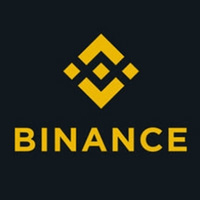
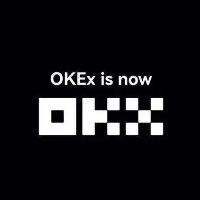
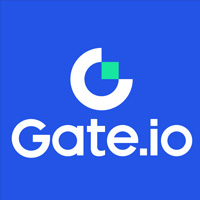

China Line APP DL China Line APP DL
China Line APP DL
China Line APP DL
Note: The above exchange logo is the official website registration link, and the text is the APP download link.
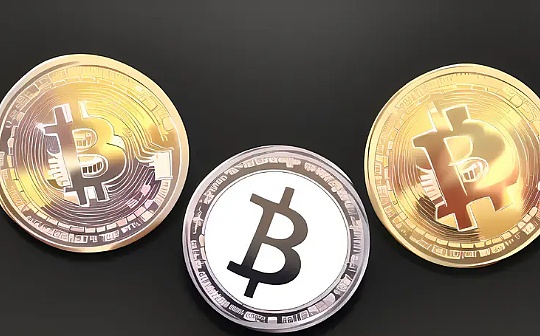
Is Bitcoin mining profitable? Does Bitcoin mining really make money? Judging from the current currency circle data, the difficulty of Bitcoin mining is gradually increasing, and Bitcoin is becoming more and more difficult to mine, but there are still many people who never return from the road of mining. The most fascinating thing about Bitcoin is mining. Why is mining so fascinating? Because mining can get Bitcoin. When I wrote this article, the price of Bitcoin was a little over $5,000. If you can mine a block, you can get $5,000 in mining income. Isn't this very fascinating? So what is mining? How do miners get Bitcoin through mining? This requires the PoW (Proof of Work) consensus mechanism adopted by the Bitcoin blockchain system.
PoW (Proof of Work) consensus mechanism
Let me tell you a story: There was a village where many things needed to be decided by everyone. For example, one day, the village chief needed all the villagers to decide whether to make dumplings or noodles in the village canteen at noon. Usually, the way we can think of is voting.
----
Each villager has one vote, and the minority obeys the majority. However, some villagers do not want to eat in the canteen, so they may give their tickets to others, which may lead to unfairness, and most people who eat in the canteen may not realize their wishes.
So the village chief changed his approach. At 10:50, he used a loud speaker to announce to all villagers: "Everyone, come and choose whether the canteen will make dumplings or noodles for lunch. Those who want to eat in the canteen should go to the canteen gate and push the huge stone. At 11 o'clock, if the stone is pushed to the east side of the gate, they will have dumplings for lunch; if it is pushed to the west side of the gate, they will have noodles for lunch."
So those who wanted to eat in the canteen went to push the stone. The people who contributed more effort finally realized their wish, and the people who contributed less effort were also willing to do so, because this has always been the rule in the village.
This story tells a way to achieve consensus among the crowd, which we can call the "proof of work mechanism". Use the amount of work you put in to prove your willingness to choose.
In the first article of this series, we talked about how the blockchain system can keep everyone's ledgers consistent. This mechanism that keeps all node data consistent is called a consensus mechanism. Using different consensus algorithms can achieve consensus effects with different performances, and the ultimate goal is to maintain data consistency.
Recording proof of workload, cannot be tampered with. We already know that in the Bitcoin system, recording transactions is the basic way the system works. In the Bitcoin blockchain system, blocks are the most basic container for recording transactions. In Bitcoin (BTC), the current block size limit is 1MB (a new virtual currency called Bitcoin Cash - BCC was just born a few days ago, and the block size limit is currently 8MB). Since the size of the block is limited, the number of transactions that each block can accommodate is also limited. At present, the Bitcoin system stipulates that one block is generated every 10 minutes on average. Therefore, the way miners work is essentially to collect all transactions generated on the Internet within 10 minutes, and then fill the transactions into a block. This block is roughly as shown in the following table:
Note the first item. In any block, the first item has no transfer address, which is the so-called CoinBase (mining transaction). No one paid the miner this money, the miner just wrote that he got 12.5 bitcoins. All nodes recognize that the miner wrote this, so the miner got the mining income.
When different miners fill in the block, the data must be different, because the first item of each miner must be different, and the miner will only transfer the mining income to his own address. So the CoinBase of miner Michael is "Michael received 12.5 bitcoins", and the CoinBase of miner Nancy is "Nancy received 12.5 bitcoins".
Each miner fills in the transactions he has collected and the income he should have received. So, whose record will be recognized by everyone? Bitcoin uses the proof of work mechanism, which allows miners to compete with each other to solve a math problem. Whoever solves it first will have his block recognized by everyone. Just like the village in the story at the beginning, each miner is working hard to push the boulder. Once the boulder presses down the page of the account he recorded, he shouts, "My proof of work is successful, come and see!" All miners come over to copy that page of the account, paste it at the end of their own account book, and then start a new accounting process. Over and over again, the account book increases page by page, and the account book becomes thicker and thicker.
When Satoshi Nakamoto decided to adopt the proof-of-work mechanism, his starting point was to prevent the system from being attacked. Satoshi Nakamoto believed that if an attacker wanted to attack by messing up the ledger, he would need sufficient computing power. In other words, he would have to have more power than most people who push stones. In this way, he would have to pay a huge cost, but the benefits in return would not be enough to offset the cost, so the attacker had no economic motivation to attack the Bitcoin system.
The difference from the method of pushing a stone is that in Bitcoin, everyone works together to solve a math problem by exhaustively searching for results. Not everyone with strong computing power will win every time, because someone may be lucky and find the answer right away. Someone with strong computing power may not be so lucky this time, and may not find a solution after exhaustively searching for many times. However, from a probability perspective, the number of times the answer is found is consistent with the proportion of one's computing power in the entire Bitcoin network. In other words, if a miner has 30% of the computing power of the entire network, then basically in 1,000 minutes (100 blocks are generated), 30 blocks are the answers he found, and he gets 30% of the mining income.
However, as the price of Bitcoin is getting higher and higher, the people pushing the stone are no longer satisfied with pushing it by themselves, but have sent all the big mules and horses in their homes to work. In the original design of "Satoshi Nakamoto", one CPU has one vote, and the computing power is used to determine which miner's account becomes the final account. As the price of Bitcoin increases, GPU mining began to appear. Later, people were not satisfied with the speed of GPU and began to manufacture dedicated chips for mining. The ability of dedicated chips to calculate Bitcoin problems is tens of thousands of times that of ordinary CPUs. Therefore, Bitcoin is no longer "one CPU one vote", which also deviates from the original design of "Satoshi Nakamoto". The Bitcoin network has basically been monopolized by several major mining pools, which deviates from the original intention of decentralized currency.
I'll answer.
Articles related to tags
- US Senator Bitcoin can vote with its feet Don’t create a hosti
- How to trade OK Wallet coins OK Wallet Trading Tutorial
- Taking stock of the mysterious creators of Bitcoin Who are thes
- How to download the Pancake Exchange APP Pancakeswap official w
- How to buy Litecoin Cash LCC Currency Buying and Trading Tutori
- What does Bitcoin quarterly contract mean Popular explanations
- Hong Shao Rou HSR Comprehensive Introduction to Trading Platfo
- Rich Dad author Global economy may collapse Bitcoin is worth $
- Bitcoin price dropped by half What are Bitcoin miners and minin
- What should I do if my Bitcoin position is liquidated Do I have
user
2480
Ask
979K+
reading
0
Answer
3H+
Upvote
2H+
Downvote
-
 Artery Network(ARTR幣)在那裏挖?ArteryNetwork(ARTR幣)是一種新興的加密貨幣,它的採礦過程與比特幣和以太幣等其他加密貨幣類似。ARTR幣的挖礦過程是通過計算機資源解決複雜的數學問題來獲取新的幣。這一過程需要大量的計算能力和電力,因此挖礦者需要投入相應的硬件和電力成本。 A2025-03-26 21:33:09
Artery Network(ARTR幣)在那裏挖?ArteryNetwork(ARTR幣)是一種新興的加密貨幣,它的採礦過程與比特幣和以太幣等其他加密貨幣類似。ARTR幣的挖礦過程是通過計算機資源解決複雜的數學問題來獲取新的幣。這一過程需要大量的計算能力和電力,因此挖礦者需要投入相應的硬件和電力成本。 A2025-03-26 21:33:09 -
 Litbinex Coin(LTB幣)走勢如何LitbinexCoin LTB幣 作為一種加密貨幣,其價格走勢取決於市場供求和投資者對其價值的認知。在過去的一段時間裡,LTB幣的價格可能出現了一些波動,這可能是由於市場情緒、新聞事件或技術因素所引起的。 在過去的幾個月中,全球加密貨幣市場經歷了一些波動2025-03-26 21:33:03
Litbinex Coin(LTB幣)走勢如何LitbinexCoin LTB幣 作為一種加密貨幣,其價格走勢取決於市場供求和投資者對其價值的認知。在過去的一段時間裡,LTB幣的價格可能出現了一些波動,這可能是由於市場情緒、新聞事件或技術因素所引起的。 在過去的幾個月中,全球加密貨幣市場經歷了一些波動2025-03-26 21:33:03 -
 Starbound(SBD幣)最新動態SBD幣,即Starbound,是一种基于区块链技术的加密货币,旨在为用户提供一种快速、安全和低成本的支付方式。最近,Starbound团队宣布了一系列重大动态,以提升其在加密货币市场的地位和影响力。 首先,Starbound团队宣布他们已经与几家知名的加2025-03-26 21:32:59
Starbound(SBD幣)最新動態SBD幣,即Starbound,是一种基于区块链技术的加密货币,旨在为用户提供一种快速、安全和低成本的支付方式。最近,Starbound团队宣布了一系列重大动态,以提升其在加密货币市场的地位和影响力。 首先,Starbound团队宣布他们已经与几家知名的加2025-03-26 21:32:59 -
 Catcoin(CATS幣)最新新聞最新消息指出,Catcoin(CATS幣)在近期取得了巨大的成功,吸引了越來越多投資者的關注。這種加密貨幣是專為貓主人和貓愛好者而設計的,旨在建立一個支持貓咪社群的加密支付系統。 Catcoin的價值一直在不斷上漲,吸引了許多散戶和機構投資者的投入。這種加2025-03-26 21:32:54
Catcoin(CATS幣)最新新聞最新消息指出,Catcoin(CATS幣)在近期取得了巨大的成功,吸引了越來越多投資者的關注。這種加密貨幣是專為貓主人和貓愛好者而設計的,旨在建立一個支持貓咪社群的加密支付系統。 Catcoin的價值一直在不斷上漲,吸引了許多散戶和機構投資者的投入。這種加2025-03-26 21:32:54 -
 YFPI(YFPI幣)最新資訊YFPIYFPI幣是一種加密貨幣,它是由一個名為YFPI的去中心化金融平台所發行的。YFPI的目標是成為一個具有高度流動性和穩定價值的加密貨幣,讓用戶可以更方便地進行交易和支付。 最近,YFPI的價格一直在波動,受到市場情緒和投資者信心的影響。儘管如此,Y2025-03-26 21:32:49
YFPI(YFPI幣)最新資訊YFPIYFPI幣是一種加密貨幣,它是由一個名為YFPI的去中心化金融平台所發行的。YFPI的目標是成為一個具有高度流動性和穩定價值的加密貨幣,讓用戶可以更方便地進行交易和支付。 最近,YFPI的價格一直在波動,受到市場情緒和投資者信心的影響。儘管如此,Y2025-03-26 21:32:49 -
 WaveEduCoin(WEC幣)是詐騙?WaveEduCoinWEC幣是一個虛擬貨幣項目,宣稱旨在為教育領域提供解決方案。然而,有人對這個項目提出了質疑,認為WaveEduCoinWEC幣可能是一個詐騙項目。 首先,WaveEduCoinWEC幣的團隊背景和專業性受到質疑。許多投資者發現他們在官2025-03-26 21:32:43
WaveEduCoin(WEC幣)是詐騙?WaveEduCoinWEC幣是一個虛擬貨幣項目,宣稱旨在為教育領域提供解決方案。然而,有人對這個項目提出了質疑,認為WaveEduCoinWEC幣可能是一個詐騙項目。 首先,WaveEduCoinWEC幣的團隊背景和專業性受到質疑。許多投資者發現他們在官2025-03-26 21:32:43 -
 Pegs Shares(PEGS幣)符合當地法律嗎PegsShares(PEGS幣)是一種加密貨幣,目前在市場上並無法得到明確的法律規範。然而,對於加密貨幣的法律規定在各國各地可能有所不同,因此在使用和投資這種加密貨幣時需要謹慎對待。 在一些國家,加密貨幣被視為合法的貨幣形式,並受到相應的法律保護。然而,2025-03-26 21:32:36
Pegs Shares(PEGS幣)符合當地法律嗎PegsShares(PEGS幣)是一種加密貨幣,目前在市場上並無法得到明確的法律規範。然而,對於加密貨幣的法律規定在各國各地可能有所不同,因此在使用和投資這種加密貨幣時需要謹慎對待。 在一些國家,加密貨幣被視為合法的貨幣形式,並受到相應的法律保護。然而,2025-03-26 21:32:36 -
 JUS Token(JUS幣)總部在那JUSTokenJUS幣是一家总部位于新加坡的加密货币公司。新加坡是一个国际金融中心,拥有完善的法律体系和监管机制,吸引了许多加密货币和区块链公司选择在这里设立总部。 JUSTokenJUS幣总部位于新加坡的好处包括: 1 法律体系完善:新加坡的法律体系健2025-03-26 21:32:30
JUS Token(JUS幣)總部在那JUSTokenJUS幣是一家总部位于新加坡的加密货币公司。新加坡是一个国际金融中心,拥有完善的法律体系和监管机制,吸引了许多加密货币和区块链公司选择在这里设立总部。 JUSTokenJUS幣总部位于新加坡的好处包括: 1 法律体系完善:新加坡的法律体系健2025-03-26 21:32:30 -
 I-COIN(ICN幣)非法傳銷ICN幣是一種加密貨幣,類似於比特幣或以太幣,通過區塊鏈技術進行交易和存儲價值。然而,近年來有一些人利用ICN幣進行非法傳銷活動,給投資者帶來了風險和損失。 非法傳銷是指通過招聘下線、忽悠投資者參與項目來賺取高額回報的行為。在ICN幣的非法傳銷中,一些不法2025-03-26 21:32:27
I-COIN(ICN幣)非法傳銷ICN幣是一種加密貨幣,類似於比特幣或以太幣,通過區塊鏈技術進行交易和存儲價值。然而,近年來有一些人利用ICN幣進行非法傳銷活動,給投資者帶來了風險和損失。 非法傳銷是指通過招聘下線、忽悠投資者參與項目來賺取高額回報的行為。在ICN幣的非法傳銷中,一些不法2025-03-26 21:32:27 -
 Glitch Protocol(GLCH幣)交易合法不GlitchProtocol(GLCH幣)是一種加密貨幣,其交易合法性取決於當地政府對加密貨幣的規定和監管。在一些國家,加密貨幣被視為合法的資產,可以自由交易和使用。然而,在一些國家,政府可能對加密貨幣實施嚴格的監管措施,甚至禁止其交易。 若要確定Glit2025-03-26 21:32:20
Glitch Protocol(GLCH幣)交易合法不GlitchProtocol(GLCH幣)是一種加密貨幣,其交易合法性取決於當地政府對加密貨幣的規定和監管。在一些國家,加密貨幣被視為合法的資產,可以自由交易和使用。然而,在一些國家,政府可能對加密貨幣實施嚴格的監管措施,甚至禁止其交易。 若要確定Glit2025-03-26 21:32:20
-
 Cat(CAT幣)的交易量CAT幣是一種虛擬貨幣,目前在加密貨幣市場中交易量相對較小。然而,隨著加密貨幣市場的不斷發展和成長,CAT幣的交易量也在逐漸增加。 CAT幣的交易量取決於市場需求和供應情況,以及交易所的交易活動。一般來說,CAT幣的交易量可能會受到市場情緒、新聞事件、技術2025-03-26 21:34:43
Cat(CAT幣)的交易量CAT幣是一種虛擬貨幣,目前在加密貨幣市場中交易量相對較小。然而,隨著加密貨幣市場的不斷發展和成長,CAT幣的交易量也在逐漸增加。 CAT幣的交易量取決於市場需求和供應情況,以及交易所的交易活動。一般來說,CAT幣的交易量可能會受到市場情緒、新聞事件、技術2025-03-26 21:34:43 -
 紅域(巧克力)(QKL幣)涉嫌詐騙紅域(巧克力)(QKL幣)是一種虛擬貨幣,近期涉嫌詐騙的傳聞不斷。根據一些用戶的投訴和報導,有人聲稱在投資這個虛擬貨幣時遭受了損失,而且無法取回投資的資金。 在這種情況下,投資者應該格外小心,避免受騙。首先,要確保所投資的虛擬貨幣是合法的,有穩定的背景和可2025-03-26 21:34:37
紅域(巧克力)(QKL幣)涉嫌詐騙紅域(巧克力)(QKL幣)是一種虛擬貨幣,近期涉嫌詐騙的傳聞不斷。根據一些用戶的投訴和報導,有人聲稱在投資這個虛擬貨幣時遭受了損失,而且無法取回投資的資金。 在這種情況下,投資者應該格外小心,避免受騙。首先,要確保所投資的虛擬貨幣是合法的,有穩定的背景和可2025-03-26 21:34:37 -
 Yukon(YUKON幣)倒閉了最近有傳聞指出,Yukon(YUKON幣)可能即將倒閉。這個消息引起了市場的驚慌和困憂,許多投資者和持有者都在擔心他們的資金和投資是否會受到影響。 Yukon是一種加密貨幣,最初是在2017年推出的。它在推出後吸引了很多投資者和用戶,因為它的技術和應用前景2025-03-26 21:34:33
Yukon(YUKON幣)倒閉了最近有傳聞指出,Yukon(YUKON幣)可能即將倒閉。這個消息引起了市場的驚慌和困憂,許多投資者和持有者都在擔心他們的資金和投資是否會受到影響。 Yukon是一種加密貨幣,最初是在2017年推出的。它在推出後吸引了很多投資者和用戶,因為它的技術和應用前景2025-03-26 21:34:33 -
 AGPC TOKEN(AGPC幣)不合法AGPCTOKENAGPC幣 是一种虚拟货币,它并不是任何国家的法定货币,也不受到任何监管机构的监管。因此,AGPCTOKEN 不具备合法货币的属性,也没有法律地位。在很多国家和地区,虚拟货币并不被认可为合法支付工具,因此使用AGPCTOKEN 进行交易可2025-03-26 21:34:27
AGPC TOKEN(AGPC幣)不合法AGPCTOKENAGPC幣 是一种虚拟货币,它并不是任何国家的法定货币,也不受到任何监管机构的监管。因此,AGPCTOKEN 不具备合法货币的属性,也没有法律地位。在很多国家和地区,虚拟货币并不被认可为合法支付工具,因此使用AGPCTOKEN 进行交易可2025-03-26 21:34:27 -
 RentalChain(RNL幣)在中國禁止RentalChainRNL幣是一种基于区块链技术的租赁服务平台的代币,旨在通过区块链技术实现租赁行业的数字化和智能化。然而,由于中国政府对加密货币的监管政策非常严格,目前RentalChain在中国被禁止。 中国政府自2017年开始加强对加密货币的监管,2025-03-26 21:34:19
RentalChain(RNL幣)在中國禁止RentalChainRNL幣是一种基于区块链技术的租赁服务平台的代币,旨在通过区块链技术实现租赁行业的数字化和智能化。然而,由于中国政府对加密货币的监管政策非常严格,目前RentalChain在中国被禁止。 中国政府自2017年开始加强对加密货币的监管,2025-03-26 21:34:19 -
 FlapXCoin(FLAPX幣)是空氣幣FlapXCoinFLAPX幣並不是空氣幣,而是一種虛擬加密貨幣。空氣幣通常指的是沒有實際的價值或用途,只是為了炒作而被創建出來的虛擬貨幣。然而,FlapXCoin是一種經過加密技術保護的數字貨幣,具有真實的價值和用途。 FlapXCoin是通過區塊鏈技術2025-03-26 21:34:13
FlapXCoin(FLAPX幣)是空氣幣FlapXCoinFLAPX幣並不是空氣幣,而是一種虛擬加密貨幣。空氣幣通常指的是沒有實際的價值或用途,只是為了炒作而被創建出來的虛擬貨幣。然而,FlapXCoin是一種經過加密技術保護的數字貨幣,具有真實的價值和用途。 FlapXCoin是通過區塊鏈技術2025-03-26 21:34:13 -
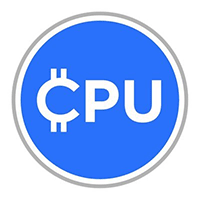 CPUcoin(CPU幣)是什麽CPUcoin是一种基于区块链技术的加密货币,旨在通过共享计算资源来提高计算机性能和效率。CPUcoin的目标是利用闲置的计算资源,例如个人计算机或数据中心的服务器,来为用户提供更好的计算服务。CPUcoin的核心概念是将计算资源共享化,使得用户可以通过共2025-03-26 21:34:07
CPUcoin(CPU幣)是什麽CPUcoin是一种基于区块链技术的加密货币,旨在通过共享计算资源来提高计算机性能和效率。CPUcoin的目标是利用闲置的计算资源,例如个人计算机或数据中心的服务器,来为用户提供更好的计算服务。CPUcoin的核心概念是将计算资源共享化,使得用户可以通过共2025-03-26 21:34:07 -
 XMZ(XMZ幣)APP下載地址XMZ(XMZ幣)是一種加密貨幣,它是基於區塊鏈技術的去中心化數字貨幣。如果您想要使用XMZ幣進行交易或投資,您可以下載XMZ的官方應用程序來管理您的資產。 XMZ應用程序可以讓您輕鬆地查看您的賬戶餘額、進行轉賬和收款。同時,您還可以通過應用程序查看最新的2025-03-26 21:34:02
XMZ(XMZ幣)APP下載地址XMZ(XMZ幣)是一種加密貨幣,它是基於區塊鏈技術的去中心化數字貨幣。如果您想要使用XMZ幣進行交易或投資,您可以下載XMZ的官方應用程序來管理您的資產。 XMZ應用程序可以讓您輕鬆地查看您的賬戶餘額、進行轉賬和收款。同時,您還可以通過應用程序查看最新的2025-03-26 21:34:02 -
 Sergey Save Link(SSL幣)近期會暴跌?近期,有一些市場分析師對SergeySaveLink SSL幣未來的走勢感到悲觀,認為它可能會暴跌。這種預測主要基於幣值波動性高和市場不穩定的情況下,SSL幣可能會受到影響而下跌。 首先,SSL幣是一種虛擬加密貨幣,價值受到市場供需和投資者情緒的影響。在市2025-03-26 21:33:58
Sergey Save Link(SSL幣)近期會暴跌?近期,有一些市場分析師對SergeySaveLink SSL幣未來的走勢感到悲觀,認為它可能會暴跌。這種預測主要基於幣值波動性高和市場不穩定的情況下,SSL幣可能會受到影響而下跌。 首先,SSL幣是一種虛擬加密貨幣,價值受到市場供需和投資者情緒的影響。在市2025-03-26 21:33:58 -
 Authoreon(AUN幣)近期會暴漲?近期,人們對Authoreon(AUN幣)的關注度正在逐漸增加,這可能導致其價格走勢出現一定程度的波動。有一些人認為,Authoreon的價格可能會出現暴漲的情況,這主要是基於以下幾個原因: 首先,Authoreon是一個新興的加密貨幣項目,它擁有一個強大2025-03-26 21:33:53
Authoreon(AUN幣)近期會暴漲?近期,人們對Authoreon(AUN幣)的關注度正在逐漸增加,這可能導致其價格走勢出現一定程度的波動。有一些人認為,Authoreon的價格可能會出現暴漲的情況,這主要是基於以下幾個原因: 首先,Authoreon是一個新興的加密貨幣項目,它擁有一個強大2025-03-26 21:33:53


 Bitcoin
Bitcoin Binance幣安
Binance幣安


